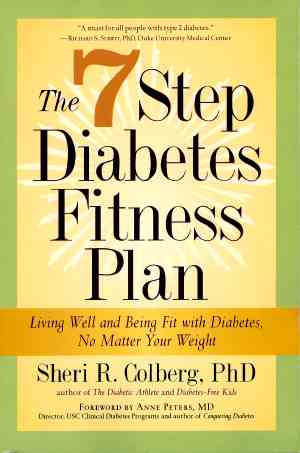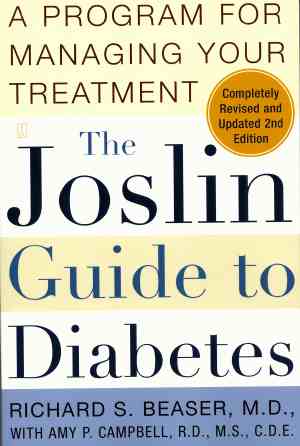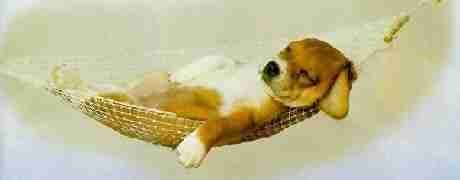My most recent articles are:
- Blogging: RSS Feed
My blog at http://blogs.healthcentral.com/diabetes/david-mendosa now has an RSS feed. So it’s a real blog now! What this means for you is that now each of my blog entries will automatically come into your blog reader as they go online once you subscribe by clicking on the “RSS” at the end of the third column of each of my blog entries. Among the many excellent (and free) blog readers are Bloglines, which I use to keep up with all the blogs that I follow.My new blog entries for December are:
- Double-Blind Studies at http://blogs.healthcentral.com/diabetes/david-mendosa/double-blind-studies-2005-12-16. The double-blind placebo-controlled trial is one of the major scientific advances of the 20th century.
- Foot Saving Gadgets at http://blogs.healthcentral.com/diabetes/david-mendosa/foot-saving-gadgets-2005-12-06. Three new devices and one that is on the way can prevent needless amputations from diabetic neuropathy.
- Taming the Dawn Phenomenon at http://blogs.healthcentral.com/diabetes/david-mendosa/taming-the-dawn-phenomenon-2005-12-06. We have several strategies to avoid having higher blood glucose when we wake up than when we have gone to bed.
- Overcoming Burnout at http://blogs.healthcentral.com/diabetes/david-mendosa/overcoming-burnout-2005-12-06. Of course you will get burned out from constantly dealing with diabetes. It’s what you do next that counts.
- Searching MEDLINE at http://blogs.healthcentral.com/diabetes/david-mendosa/searching-medline-2005-12-24. Where do you go if you are trying to check out a mainstream drug or treatment for diabetes? The answer is MEDLINE.
- The Best Grain at http://blogs.healthcentral.com/diabetes/david-mendosa/the-best-grain-2005-12-24. The best grain is certainly a certain form of barley.
- Reese’s Peanut Butter Bluff at http://blogs.healthcentral.com/diabetes/david-mendosa/whither-reeses-2005-12-24. I was so excited to read that there is now a sugar-free version of Reese’s Peanut Butter Cups. My excitement is gone.
- Learning with Grillo at http://blogs.healthcentral.com/diabetes/david-mendosa/learning-with-grillo-2005-12-26. The Grillo Health Care Information Center is a great resource for anyone with diabetes and anyone else seeking health information. And it’s free.
- Double-Blind Studies at http://blogs.healthcentral.com/diabetes/david-mendosa/double-blind-studies-2005-12-16. The double-blind placebo-controlled trial is one of the major scientific advances of the 20th century.
- Meter Variability
Our blood glucose meters are too variable. I have been writing that for years, and it’s not just my opinion. Now experts from the U.S. Centers for Disease Control and Prevention (CDC) have studied a representative sample of the available blood glucose meters and their test strips. They found way too much variability. They published their results in a highly technical article full of statistics in the journal Clinica Chimica Acta. I did my best to explain their findings in normal English. For my article about meter variability please read it in the January 2006 issue of Diabetes Health magazine or read it on my website at http://www.mendosa.com/variability.htm
- Educational Materials: Meters
For those of us who are looking for educational materials about diabetes, it’s only people like us who use the Web are in luck. For my article about educational materials on meters please read it in the Fall 2005 issue of Diabetes Health’s “Diabetes Educational Resource Guide” or read it on my website at http://www.mendosa.com/educ_materials.htm
Book Reviews:

Fit and Fat
- Fit and Fat
You can stop worrying about your weight. It’s more important — to say nothing of being more realistic — to become more active every day. Fitness trumps weight loss for people with diabetes, almost all of whom are overweight.
This is the welcomed and inspiring message of Sheri Colberg, PhD. You can be healthy even if you have excess body fat. No matter what you weigh, regular exercise will make you healthier. Dieting probably won’t because it usually fails because of subsequent rebound in weight. This yo-yo dieting isn’t good for anyone’s health.
As I read Dr. Colberg’s book, I kept thinking that it is even more important for overweight people with diabetes to exercise than it is for those of normal weight. Since I didn’t remember that she made that point, I asked her.
“Yes, I would agree with that,” she replied. “Although it is better to be ‘fit and fat,’ it is always best to be ‘fit and thin’ if possible.”
Her new book, The 7 Step Diabetes Fitness Plan, is the third book of this exercise physiologist and associate professor of exercise science at Old Dominion University in Norfolk, Virginia. Last year I reviewed her second book, Diabetes-Free Kids, here.
Dr. Colberg is not only an academic specializing in exercise. Equally relevant credentials are the diabetes that she has lived with most of her life and her own exercise regimen.
When is the best time to exercise? I was fascinated with her report of a study showing that blood glucose levels of some men with diabetes who had moderate control dropped dramatically when they exercised two hours after eating breakfast. When they exercised before breakfast, their levels hardly dropped at all. These finding are based on “Prior meal enhances the plasma glucose lowering effect of exercise in type 2 diabetes” by Paul Poirier and his associates at Quebec’s Laval University. Medicine and Science in Sports and Exercise published this report in its August 2001 issue.
Even if dieting is a mistake, a good diet certainly isn’t. Dr. Colberg in fact devotes as much of this excellent book to a healthy diet as she does to healthy exercise.
Sheri R. Colberg’s 7 Step Diabetes Fitness Plan is a 262-page trade paperback listed at $15.95. Marlowe & Company in New York will publish it on January 10, 2006. The ISBN is 1-56924-331-X.

Joslin Guide
- Joslin Guide
The oldest and most prestigious diabetes clinic is the first in the United States to endorse the concept of the glycemic index and glycemic load.
Last year the Joslin Diabetes Center in Boston published its diet and exercise guidelines for overweight people with type 2 diabetes or pre-diabetes. This “Clinical Nutrition Guideline For Overweight and Obese Adults With Type 2 Diabetes, Prediabetes or at High Risk for Developing Type 2 Diabetes” seems to be to be the soundest and most up-to-date of any such recommendations.
Dr. Colberg’s 7 Step book, which I reviewed above, brought this breakthrough in American acceptance of the glycemic index to my attention. And now the Joslin clinic has come out with the second edition of its Joslin Guide to Diabetes, which also endorses the glycemic index.
The Joslin Guide has its roots in Joslin clinic founder Dr. Elliott P. Joslin’s Diabetes Manual. The first of 12 editions appeared between 1918 and the 1970s, when it evolved into the Joslin Guide.
This is a first-rate reference book, but not something that you will want to read straight through. It’s so packed full of information that it’s not a book that you can read for pleasure.
By Richard S. Beaser, M.D., and Amy P. Campbell, The Joslin Guide to Diabetes is a 431-page trade paperback listed at $16.95. It is a Fireside Book published by Simon & Schuster on November 1. The ISBN is # 0-7432-5784-7.
Announcements:
- This Newsletter
Diabetes Update keeps you up-to-date with new articles, Web pages, and books that I have written about diabetes.I list and link most of these on my at Diabetes Directory and in the site’s menu.
From time to time Diabetes Update may also include links to other Web pages of special interest.
- HTML Format
I send out Diabetes Update e-mail in HTML format, which all Web browsers and most modern e-mail programs can display. HTML has live links to all the sites named in the text so that with a simple click of a mouse you can connect to the site you have just been reading about. - My Guarantee
This newsletter:- Is and will remain free.
- Will never include advertising (except targeted Google ads at the bottom of the web page and not in the email newsletter).
- Nor will I ever sell, rent, or trade your e-mail address to anyone.
- I will link sources of information.
- I will disclose any conflict of interest.
- If and when I learn of any errors of fact, I will correct them.
Archives:
I now send out Diabetes Update once a month. Previous issues are online:
- Diabetes Update Number 1: Diabetes Genes of December 10, 2000
- Diabetes Update Number 2: DiabetesWATCH of December 18, 2000
- Diabetes Update Number 3: Starlix of January 3, 2001
- Diabetes Update Number 4: Native Seeds/SEARCH, Tepary Beans of January 17, 2001
- Diabetes Update Number 5: Insulin Makes You Fat of January 31, 2001
- Diabetes Update Number 6: Available and Unavailable Carbohydrates of February 15, 2001
- Diabetes Update Number 7: Dates of March 1, 2001
- Diabetes Update Number 8: Quackwatch of March 15, 2001
- Diabetes Update Number 9: The Cost of Insulin of March 30, 2001
- Diabetes Update Number 10: Sof-Tact Meter of April 2, 2001
- Diabetes Update Number 11: iControlDiabetes of April 16, 2001
- Diabetes Update Number 12: Cinnamon, Tagatose of May 2, 2001
- Diabetes Update Number 13: Glycemic Index of May 15, 2001
- Diabetes Update Number 14: Eat Your Carrots! of May 31, 2001
- Diabetes Update Number 15: Glycemic Load of June 21, 2001
- Diabetes Update Number 16: Homocysteine of July 2, 2001
- Diabetes Update Number 17: Chana Dal Tips of July 15, 2001
- Diabetes Update Number 18: Lag Time in AlternativeLand of August 2, 2001
- Diabetes Update Number 19: Fiber of August 15, 2001
- Diabetes Update Number 20: How Diabetes Works of August 30, 2001
- Diabetes Update Number 21: Insulin Resistance of September 14, 2001
- Diabetes Update Number 22: Trans Fats, Honey, CU of October 1, 2001
- Diabetes Update Number 23: Pedometer Power of October 15, 2001
- Diabetes Update Number 24: Is Glycerin a Carbohydrate? of October 31, 2001
- Diabetes Update Number 25: Kill the Meter to Save It of November 15, 2001
- Diabetes Update Number 26: Protein, Fat, and the GI of December 1, 2001
- Diabetes Update Number 27: Insulin Index of December 14, 2001
- Diabetes Update Number 28: Fructose of January 4, 2002
- Diabetes Update Number 29: Aspirin of January 14, 2002
- Diabetes Update Number 30: Stevia of January 31, 2002
- Diabetes Update Number 31: Gretchen Becker’s Book of February 19, 2002
- Diabetes Update Number 32: The UKPDS of March 4, 2002
- Diabetes Update Number 33: Financial Aid of March 18, 2002
- Diabetes Update Number 34: Pre-Diabetes of April 1, 2002
- Diabetes Update Number 35: More Glycemic Indexes of April 15, 2002
- Diabetes Update Number 36: Gila Monsters of April 30, 2002
- Diabetes Update Number 37: Is INGAP a Cure? of May 15, 2002
- Diabetes Update Number 38: Native American Diabetes of June 3, 2002
- Diabetes Update Number 39: FDA Diabetes of June 19, 2002
- Diabetes Update Number 40: Diabetes Support Groups of July 1, 2002
- Diabetes Update Number 41: New GI and GL Table of July 15, 2002
- Diabetes Update Number 42: Diabetes Sight of August 1, 2002
- Diabetes Update Number 43: DrugDigest of August 18, 2002
- Diabetes Update Number 44: Hanuman Garden of September 3, 2002
- Diabetes Update Number 45: Guidelines of September 16, 2002
- Diabetes Update Number 46: Trans Fat of October 4, 2002
- Diabetes Update Number 47: Nutrition.Gov of October 16, 2002
- Diabetes Update Number 48: Our Hearts of October 31, 2002
- Diabetes Update Number 49: Our Kidneys of November 15, 2002
- Diabetes Update Number 50: A1C<7 of December 2, 2002
- Diabetes Update Number 51: Diabetes Searches with Google of December 16, 2002
- Diabetes Update Number 52: e-Patients of January 2, 2003
- Diabetes Update Number 53: Email News of January 16, 2003
- Diabetes Update Number 54: Third Generation Meters of January 31, 2003
- Diabetes Update Number 55: Hypoglycemic Supplies of February 14, 2003
- Diabetes Update Number 56: Food Police of March 1, 2003
- Diabetes Update Number 57: Vitamins of April 1, 2003
- Diabetes Update Number 58: Lancets of May 1, 2003
- Diabetes Update Number 59: Accurate Meters of June 1, 2003
- Diabetes Update Number 60: Chromium of July 1, 2003
- Diabetes Update Number 61: Traveling of August 1, 2003
- Diabetes Update Number 62: My Book of September 1, 2003
- Diabetes Update Number 63: Hot Tubs of October 1, 2003
- Diabetes Update Number 64: Home A1C Testing of November 1, 2003
- Diabetes Update Number 65: Detemir of December 1, 2003
- Diabetes Update Number 66: Erectile Dysfunction of January 1, 2004
- Diabetes Update Number 67: Acidic Foods of February 1, 2004
- Diabetes Update Number 68: Net Carbs of March 1, 2004
- Diabetes Update Number 69: Glycemic Index of April 1, 2004
- Diabetes Update Number 70: Dreamfields Pasta of May 1, 2004
- Diabetes Update Number 71: Cholesterol of June 1, 2004
- Diabetes Update Number 72: Meter News of July 1, 2004
- Diabetes Update Number 73: Pill Splitting of August 1, 2004
- Diabetes Update Number 74: GlucoMON of September 1, 2004
- Diabetes Update Number 75: Coding of October 1, 2004
- Diabetes Update Number 76: Sleep Apnea of November 1, 2004
- Diabetes Update Number 77: Keynote Address of December 1, 2004
- Diabetes Update Number 78: Mangosteen of January 1, 2005
- Diabetes Update Number 79: Noninvasive Dream of February 1, 2005
- Diabetes Update Number 80: Pelikan Sun of March 1, 2005
- Diabetes Update Number 81: Medtronic Monitors of April 1, 2005
- Diabetes Update Number 82: ExtendBars of May 1, 2005
- Diabetes Update Number 83: GlycoMark of June 1, 2005
- Diabetes Update Number 84: My British Book of July 1, 2005
- Diabetes Update Number 85: Disintegrating of August 1, 2005
- Diabetes Update Number 86: Meter Research of September 1, 2005
- Diabetes Update Number 87: Evaluating Meters of October 1, 2005
- Diabetes Update Number 88: When to Test of November 1, 2005
- Diabetes Update Number 89: Blogging of December 1, 2005




